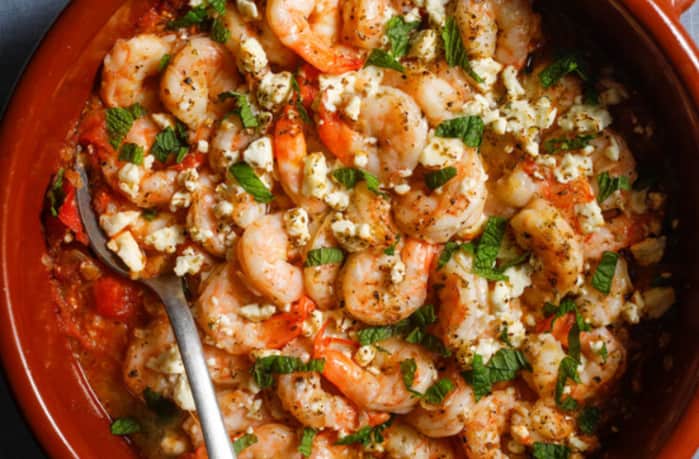Learn To Write Best Culinary Review
A food critic’s job is to accurately describe the taste, texture, smell, and presentation of food in a restaurant. It is necessary to evaluate not only the dishes, but also the atmosphere, attentiveness and awareness of the staff, speed of service, general impressions of the institution. A competent culinary review allows the reader to feel at the same table with you and decide whether to visit this essaywriterhelp.co restaurant.

1. Explore more information.
After you have finished eating and taking notes, take some time to familiarize yourself with the history of the establishment. Such details will make your review outstanding. For example, it may turn out that the chef had an internship in France or previously worked in another popular establishment. Details like these will interest the reader and convince them to visit this restaurant.
Explore the restaurant’s website. Find out the name of the owner and the chef to get an idea of the qualifications, style and prior experience of key employees.
I'm so excited to prepare so many #recipes of #drinks, #cocktails, #Moonshine, #food - I'm ready to get down to work! #Moonshinerecipe
2. Start off with exciting detail.
The first sentence should interest your readers to read the rest of the text. Your goal is not only to provide compelling reasons why a person is encouraged to spend money and visit this place or look for a more suitable restaurant, but also to arouse interest in your article. Use the following tips and tricks:
Promise an interesting story or surprise: “Not right away, but I still managed to find the best paella on this planet.” Don’t forget to keep your promise!
Indicate an intriguing indirect detail: “Chef Zinovyeva has been cooking for only two years, but during this time she has grown to the level of the best new establishment in our city.”
Describe the most memorable or unique aspect of the setting, be it a great view from the windows or a strange smell from the kitchen.
3. Describe 3-5 meals ordered, not the entire menu.
No one will be interested in the endless list of dishes, so focus only on the ones that made the greatest impression on you (positive or negative). It is not enough to give a “good” or “bad” rating. Provide all the reasons for this assessment and the shades of taste for each particular dish. Any culinary review should include information on the following three aspects: [1]
Presentation: what does the dish look like when it is served and what feelings does it evoke in the visitor? Excitement? Hunger? Do you feel like a king? As if you returned to childhood in your mom’s kitchen?
Taste: The most obvious and most important aspect of evaluating a dish. Use descriptive vocabulary, metaphors, and comparisons to convey your taste experiences to the reader. Try to name the aromas and spices that you can make out.
Texture: This aspect also covers the way of cooking. Does the food just melt in your mouth? Was it still hot when it was served? Is the product juicy and soft or hard and dry? Does this dish combine multiple textures (delicate filling and crisp)? How successful is this combination?
4. Use bright and colorful adjectives.

It is important to remember that you are describing not only the food, but also the general feeling of going to the restaurant. Do not be shy about the poetry of the language in the article and choose 1-2 apt adjectives that will allow the reader to form a very clear idea of ??the institution. Imagine writing a short story based on your last trip – include details and details that make the restaurant stand out from the rest of the establishments.
Consider the atmosphere, location, interior. The more specific the details, the better. Highlight the key points of each aspect of the interaction or perception of the restaurant.
5. Describe the goals and positioning of the restaurant, not just your personal preferences.
A good review helps readers choose the right place, rather than communicating the likes and dislikes of the author of the text. For example, when describing a restaurant in an American retro style, the emphasis on hamburgers and fries and the lack of seafood on the menu should not be considered a disadvantage. Any seasoned food critic should remain as objective as possible and evaluate a restaurant as the sum of its constituent aspects.
What kind of atmosphere does the theme of the restaurant provide? Has it been successfully implemented?
How does the menu match your preferences? If you do not like seafood, but the institution specializes in just such dishes, then try to soften your opinion about grilled salmon or immediately warn readers that you are far from a connoisseur of fish dishes.
6. Write down the merits and demerits.
If the institution is not the best or worst of all that you have ever visited, then your review should not be purely positive or negative. Try to convey the fullness of the picture. The reader should make a decision based on your advice and tips, so it is logical to indicate all the identified advantages and disadvantages of the restaurant.
“The waiters turned out to be incredibly polite and helpful, but that doesn’t change the fact that the main course was brought cold.”
“The chef of the restaurant has put together an extremely successful menu, so it’s a shame that there are only ten tables in the restaurant.”
7. Provide recommendations.
Ultimately, readers want to know your verdict. The visitor chooses dishes and establishments depending on his mood. Recommend certain items on the menu, warn about the specialties of the desert, or indicate that the place is great for romantic dates. Your review should be interesting and helpful.
If the institution does not deserve praise, and you are firmly convinced that it is better to bypass the restaurant, then write a negative review. Usually in such cases, you should visit the institution again and make sure that the first time you did not make a mistake with the choice of the dish or were not in a bad mood.
8. Please include important details at the beginning or end of the review.
Give your average bill, table reservation details and address. If you wish, you can rate the institution on your own scale. Many critics include such information in a separate paragraph at the very end of the review, but others prefer to provide important information at the beginning, in a separate sidebar, or in one of the first paragraphs.

Moonshine Recipes
Moonshine recipes, cocktail recipes, infusions, distilling, beer and wine brewing, cooking, menu, food, cocktail and more
Empire Of Heaven Vodka Cocktail | 2023
moonshinerecipe.org
This is one of the easiest cocktail recipes to make.Pimm's Cup Recipe With Fruits & Ginger Ale Mix | 2023
moonshinerecipe.org
This cocktail is a wonderful time pass idea as well as great for regular sipping routine!Gin And Tonic Recipe | Tanqueray Gin Mix | 2023
moonshinerecipe.org
Learn this fabulous Gin and Tonic Cocktail?that is as easy as apple pie! This cocktail is a wonderful time pass idea as well as great for regular sippingGin Basil Smash Cocktail Drink Recipe
moonshinerecipe.org
Learn this fabulous Best Basil Smash Cocktail?that is as easy as apple pie! This cocktail is a wonderful time pass idea as well as great for regular sippingBest Selling Products For Daily Needed Shopping |
moonshinerecipe.org
We are excited to showcase some quality lists of products your body needs. Reviewed by users, written by experienced people about these products hand picked MoonshineRecipe.Org
MoonshineRecipe.Org

